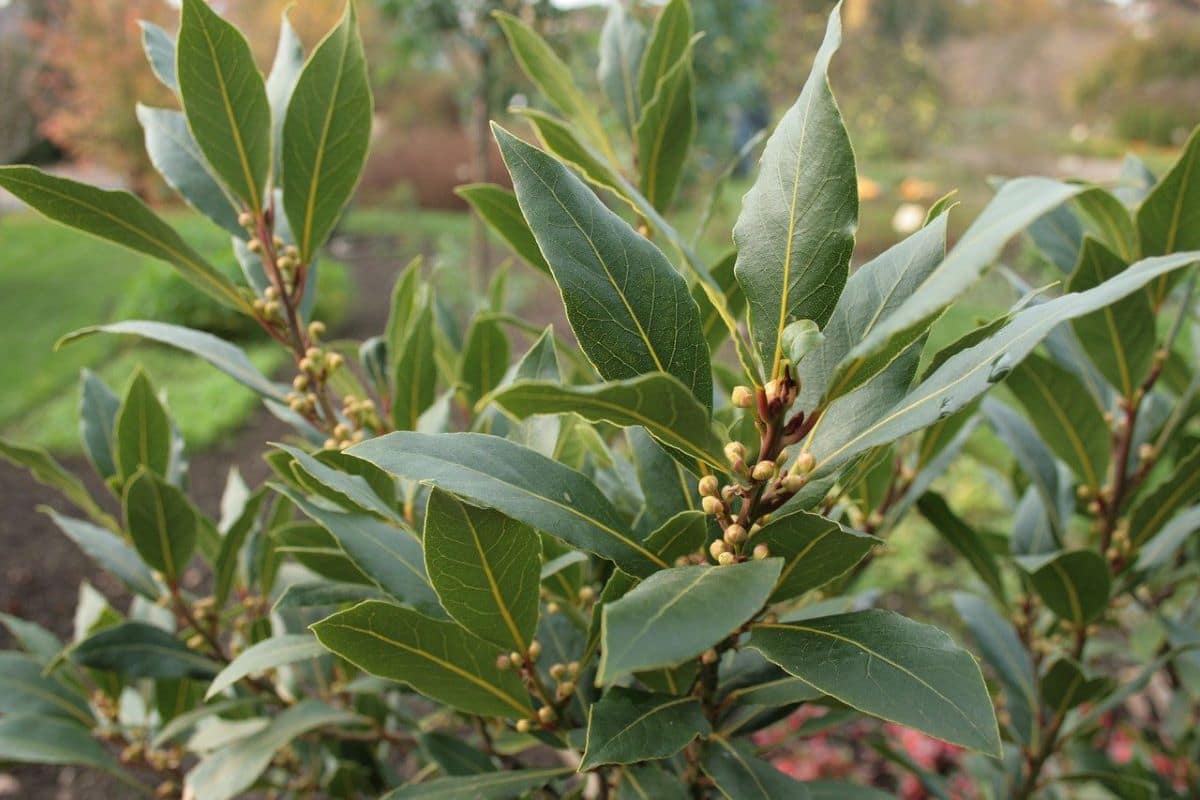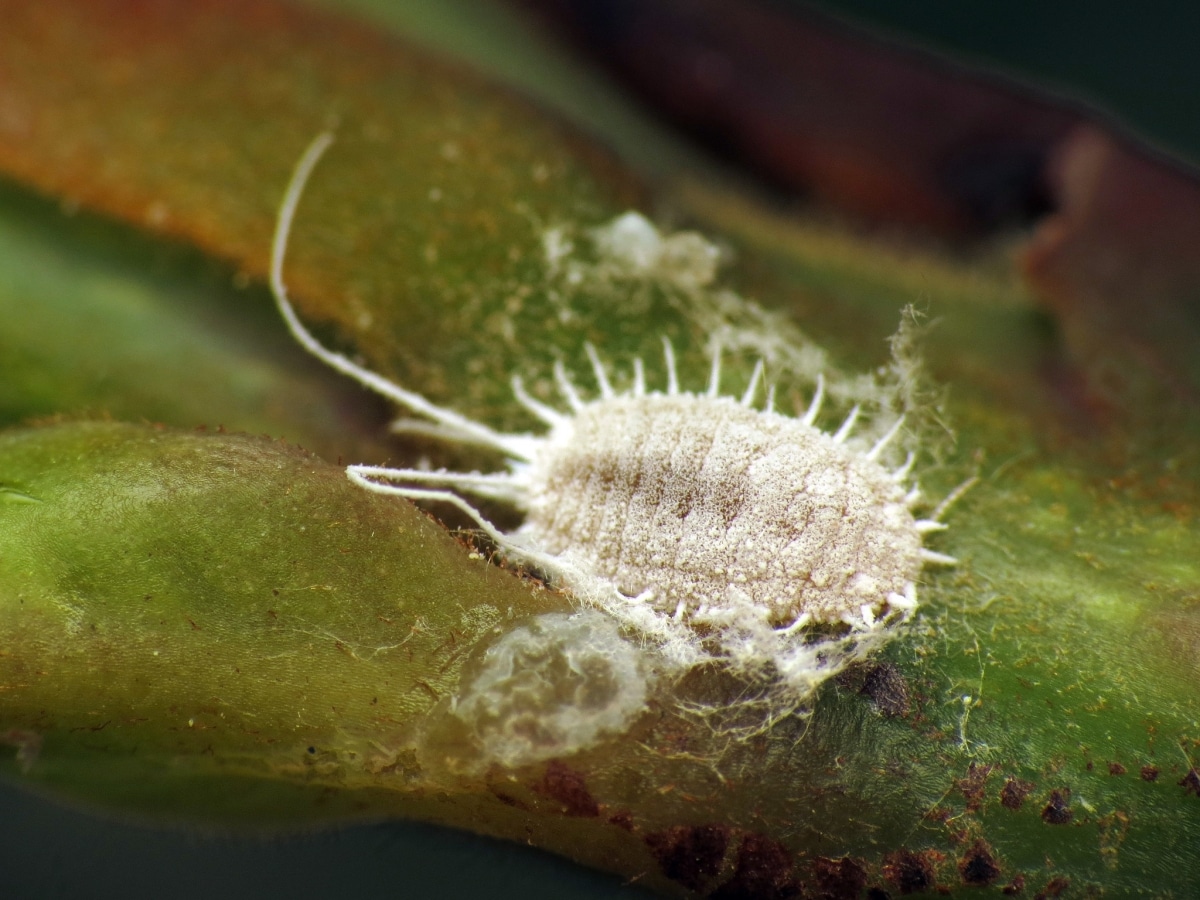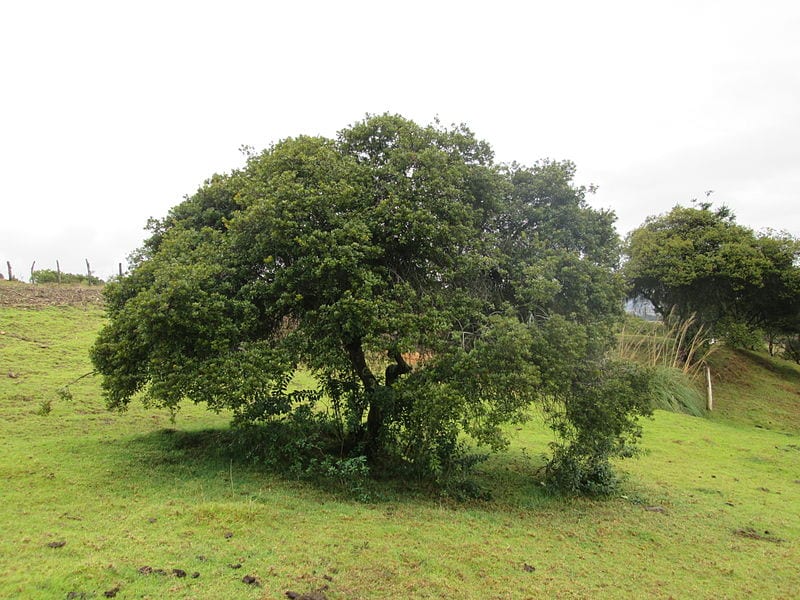
Image - Wikimedia / Krzysztof Ziarnek, Kenraiz
The laurel is a fairly hardy tree in general, but like any plant, may have brown leaves for one reason or another. Sometimes it will be for a reason that is not worrisome, but on other occasions it will be.
Therefore, we will have to be a little aware of our beloved plant, since depending on what is wrong with you, we may need to take some steps so you don't end up having all the foliage brown.
he is very thirsty

It may be difficult for you to think that a laurel, that is, a plant that supports drought without any problem, can be thirsty. Well, the reality is that it can happen to you. Whether it goes a long time without receiving a single drop of water, or if you are in a place where the air humidity is very low, the leaves dehydrate. Because?
There are two reasons:
- When potted, it naturally has a limited amount of soil. Consequently, it loses moisture much faster. Things would be different if it were in the ground, well, yes, the uppermost layers dry quickly, but the lower ones -those that are close to the roots- take a little longer, which is why it resists drought much better when it is in the ground. planted in the ground and not in a pot.
- The humidity of the air. We've said it already, but I'm going to talk more about this. The laurel is native to regions where said humidity is high. For example, him Laurus nobilis is native to the Mediterranean region, the laurus azorica of the Azores, etc. In my area (south of the island of Majorca) the humidity is so high that the plants wake up wet every day, and This humidity, that is, these droplets of water, help them to stay hydrated.. When it is very low, that is, when the environment is very dry, the leaves turn brown.
To do? The first thing is to find out if the problem is that the soil is dry, or that the humidity is very low (or both). To find out if the soil needs water, insert a thin wooden or plastic stick into it., and when extracting it -carefully- you will see if it is certainly dry or not. In the first case, it will come out almost the same as when you inserted it, but if, on the contrary, it is very wet, dirt will have adhered to it and the stick will also look wet.
To find out if the air humidity is low or high, the fastest thing to do is look for this information on the Internet., although I recommend getting one home weather station, or even download one of the many applications that are available for both Android and iPhone. I especially like the Clima one, of which I leave you the link here, but there are others like the Aemet or that of Time.is which are fine too. In the event that it is low, you will have to spray its leaves with water once a day.
It's spreading too much
This is another fairly common problem that causes browning of the leaves. The laurel is a tree that tolerates drought much better than excess water; in fact, when watered too frequently, or in a pot without holes, the roots have a hard time. Therefore, it is best to check the soil moisture before watering it, as I said just before (inserting the stick).
If you see that the leaves have begun to lose color, and you suspect that it is because you have watered too much, what you have to do is stop watering. and perform a treatment with a systemic fungicide (for sale here) in order to reduce the risk of fungi infecting it. Also, if it is in a pot without holes, you should plant it in one that does have them with quality universal substrate, such as fertiberia or the Flower for example.
Pests

Image - Flickr / Katja Schulz
El laurel It is a plant that resists very well the attack of the vast majority of pests, but there is one with which it cannot do much: the mealybugs, and in particular ones that can go completely unnoticed, as they can be confused with simple brown specks or cotton balls. Why? Because the first ones look like flat scales of that color, and the second ones precisely that, cotton. But if you scratch with your fingernail, you will immediately see that they are easily removed. The problem is that they are very insistent, and often a single treatment is not enough to eradicate the pest.
In addition, they multiply very quickly, so when you see only one specimen, there will probably be more. Consequently, the plant can become weak quickly, as the leaves turn brown and, as a consequence, the plant begins to have less ability to photosynthesize, breathe and, ultimately, carry out its vital functions.
You have to know that this plague stays active during the warm months, especially in summer, but if spring and/or autumn are hot, it can also appear. To eliminate them naturally, I highly recommend the application of diatomaceous earth (for sale here), of which I leave you a video here:
lacks light
On some occasion I have seen that it was recommended to have the laurel inside the house, that is why I wanted to tell you that It is a plant that needs to be exposed to direct sunlight. That is why it is not a plant that can do well inside a house, since in these there is usually not enough light for it to grow properly.
The same would happen if you are outside but in a dark area. It is really very important that when you buy a specimen, it is exposed to sunlight. So you can have a good development.
Have reached the end of their life

Image - Wikimedia / Edisonalv
Is your bay tree healthy but still has some brown leaves? If so, you do not have to worry, since They only live a few months or a few years.; then they die. And it's normal.
Although it is an evergreen tree, this does not mean that it keeps the same leaves throughout its life; in fact, he will gradually lose them as he replaces them with new ones.
Have you discovered why your bay tree has brown leaves?